More Than Words: Why Language Barriers Are Intersectional
By KadijaBouyzourn In public health, language is often treated as a technical issue. Translate the leaflet, subtitle the video, tick the compliance box, job done. But my research shows that language barriers are rarely just about language. They are deeply intersectional, shaped by who people are, where they come from, and what the system expects of them. During my PhD, I studied multilingual health communication in Brussels, with a focus on Moroccan-background communities, particularly speakers of Darija and Amazigh. What I found is that language exclusion is layered, not linear. It intersects with literacy, gender, digital access, trust, and colonial legacies. These barriers don’t exist in isolation. They compound.
- 5 min read
- Nov 12, 2025 2:29:59 PM
The Frankenstein Approach to Marketing
Imagine a marketing team gathered around a table, piecing together a campaign from unrelated elements—a social media post here, a Google ad there, a rushed email, a video concept pulled from another project. Lightning flashes and the campaign lurches to life. ⚡ It’s alive! Except… it’s not. This is the Frankenstein approach to marketing and it rarely works. 🧟
- 8 min read
- Oct 28, 2025 12:00:00 AM
Customers don’t buy features
You and your team worked hard and long on your innovative product. You want the world to know and understand why your product is revolutionary. It’s tempting to put the spotlight on the product: features, performance, specs, innovations. But here’s the truth: customers don’t buy features. More often than not, they don’t even know for sure your product will solve their problem when they decide. They simply buy the confidence that your product will work for them, in their context. You may invoice them for the product, but they expect a lot more.
- 10 min read
- Oct 23, 2025 12:00:00 AM
Bees: small wings, big impact
Bees are small and vulnerable. And yet they are indispensable: they pollinate, keep ecosystems in balance and enable growth. Their strength lies not in their size, but in their cooperation, resilience and the value they add. 🐝 That idea is encapsulated in the name The Bee Academy. This organisation helps IT professionals who, after burnout, stroke or other setbacks, want to find their place in the labour market again. Like bees, they play an invisible but indispensable role in our society. With the right opportunities, they can contribute, grow and flourish again – for themselves and for the organisations they end up working for.
- 3 min read
- Oct 10, 2025 12:00:00 AM
Plain Language: Why Clear Words Matter
We allknowthe feeling: a letter fromthe bank, a hospitalinstruction sheet, or a phonebill lands in your hands—andyoucan’t make sense of it. The words are long, thesentencestangled, thelayoutoverwhelming. That’swhereplainlanguagecomes in. Plainlanguage is notaboutdumbingthings down. It’sabout respect, trust, andempathy.
- 18 min read
- Oct 6, 2025 12:03:04 PM
From Vendor to Partner: Strategies for Healthcare Partnerships (Part 2)
Building on the shift from transactional vendors to strategic partners, the second part of our series dives into how collaboration works in practice. We explore strategies for effective supplier-provider partnerships, key European initiatives, procurement considerations, and the inspiring example of Maria Middelares hospital. Learn how startups and suppliers co-create solutions that improve patient outcomes, streamline operations, and generate lasting value.
- 13 min read
- Oct 1, 2025 8:53:09 AM
From Vendor to Partner: Why Healthcare Relationships Are Changing (Part 1)
Healthcare is changing faster than ever. By 2025, hospitals face rising costs, staffing challenges, and increasing pressure to deliver better outcomes with tighter budgets. In this new reality, suppliers can no longer rely on transactional sales they must become true partners. In this first part of our series, we explore why hospitals are seeking strategic collaborations, how partnerships are evolving, and real-world examples from Europe that show efficiency and shared outcomes are now the “new currency” of healthcare supplier relationships.
- 6 min read
- Sep 25, 2025 1:39:39 PM
AI in B2B marketing: fixing the friction (part 2)
AI is everywhere and your agency is likely using it already. Whether it’s drafting content, refining audience segments, or optimizing campaign visuals, AI has become the elephant in the room. As a marketing or communications leader in a European B2B company, you’re accountable not only for the messages your agency produces—but increasingly, how they’re produced. And with the EU AI Act now in play, it’s time to ask tougher questions. You don’t need to micromanage your agency’s tools—but you do need clear agreements, transparency, and responsible practices. Let’s explore how to get there.
- 17 min read
- Sep 19, 2025 8:51:14 AM
From cat videos to conversions: why B2B marketers should embrace video
What are the most popular types of videos worldwide? According to the data-gathering organisation Statista, music videos hold the number one spot, followed by comedy/meme/viral videos at spot number two. How-to videos, product reviews, and tutorials do make it on the list, but they’re a little less popular.
- 14 min read
- Aug 25, 2025 6:42:23 PM
Contact us
Lists by Topic
- B2B marketing (34)
- Healthcare (27)
- B2B marketing strategy (21)
- Content marketing (20)
- inbound marketing (20)
- B2B content marketing (19)
- Healthcare Marketing (16)
- branding (10)
- Digital marketing updates (8)
- Sustainability (8)
- reference marketing (8)
- B2B social media (7)
- Digital marketing strategies (7)
- Social media marketing (7)
- lead generation (7)
- B2B Business Plan (6)
- Customer Reference Program (6)
- Digital marketing trends (6)
- Employer branding (6)
- Social Media (6)
- Visual identity (6)
- analytics tools (6)
- digital marketing (6)
- videomarketing (6)
- Digital marketing plan (5)
- Smarketing (5)
- brand identity (5)
- sales and marketing (5)
- sonar (5)
- Communication (4)
- SEO (4)
- Video marketing (4)
- content (4)
- digitale marketing (4)
- metrics (4)
- online strategie (4)
- showpad (4)
- Content plan (3)
- Customer Reference (3)
- Marketing Metrics (3)
- Marketing automation (3)
- Measure ROI (3)
- Sales Enablement tools (3)
- business identity (3)
- hubspot (3)
- marketing analytics tools (3)
- online marketing (3)
- sociale marketing (3)
- web site (3)
- AI (2)
- B2B marketing plan (2)
- Blogs (2)
- Customer Reference Strategy (2)
- Facebook marketing (2)
- Google updates (2)
- Growth Marketing (2)
- Market your content (2)
- Print (2)
- ROI (2)
- Voice of Customer sessions (2)
- analytics (2)
- brand (2)
- corporate identity (2)
- corporate narrative (2)
- dashboard (2)
- design (2)
- digitale marketing analytics (2)
- logo (2)
- marketing analytics (2)
- marketing trends (2)
- neuromarketing (2)
- positioning (2)
- reporting (2)
- reporting service (2)
- visual (2)
- visual story (2)
- Content promotion (1)
- Digital marketing in China (1)
- Facebook live (1)
- Inbound recruitment (1)
- Inoffensive close (1)
- Market Research (1)
- Marketing ROI (1)
- More online traffic (1)
- New media (1)
- Podcasts (1)
- SEO trends 2018 (1)
- SMART goals (1)
- SMART goals and objectives (1)
- SMART marketing goals (1)
- Sales (1)
- Sales in modern age (1)
- Veeva (1)
- blogging (1)
- brand design (1)
- business (1)
- creating effective content (1)
- infusinar (1)
- internal communication (1)
- loyalty (1)
- loyalty ladder (1)
- marketing manager (1)
- marketing plan (1)
- marketing trends 2018 (1)
- online campaign (1)
- search engine optimization (1)
- storytelling (1)
- tips and tricks (1)
- visual branding (1)


